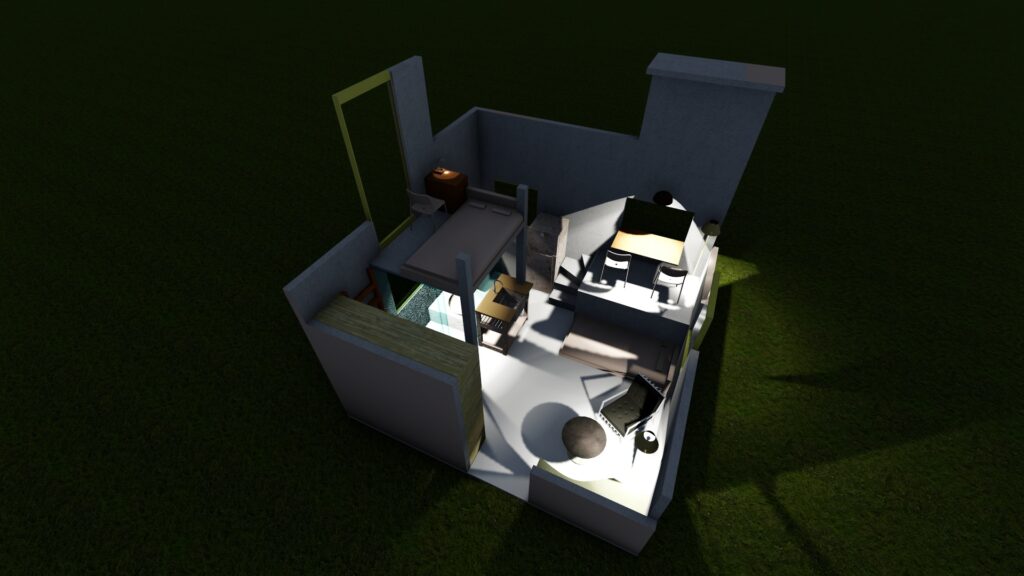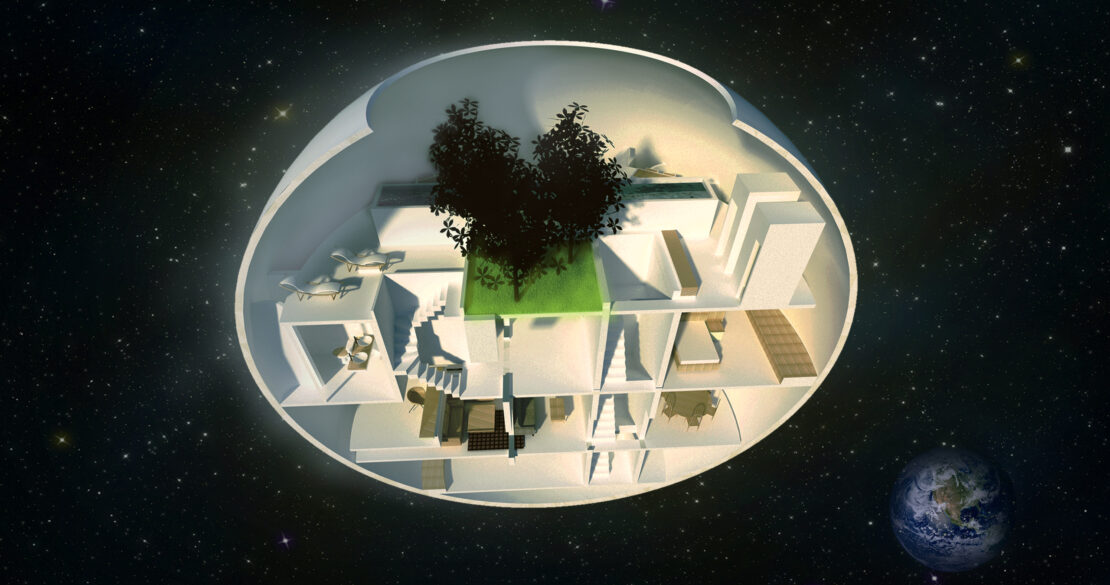A unique exercise in urban living, a Tokyo apartment today is made of a single room that incorporates living, dining, and a cupboard containing two sets of clothes and shoes; kitchen, bathroom and bed emerge from the wall when required. The minimalist apartment is a lifestyle choice, part of a growing number of Japanese couples intentionally reducing their possessions and choosing to live a more frugal life. A similar micro-house is visible in the hills of Northern California – part of a prefabricated package that includes delivery and construction within two weeks. 500-square feet in area, the wooden structure resembles a doll’s house but accommodates a family of four. In nearby San Francisco, for a small fee, a tiny cube available for rent contains a fold-out bed, a WC and sink – bare necessities for a night. Compaction of the kind being tried all across the world is attempting to achieve several ideas at once: to make homes more efficient, hotel night-stays more economical, and cities more equitable and accessible to more people.

The Indian city however is heading in the opposite direction. Donald Trump Jr. came to India recently to inaugurate a 47 storey luxury tower in Delhi. A building that has yet to start construction, 75 of its largest apartments have already been booked with a 2.5 crore deposit. Larger, bigger, more luxurious Trump Towers are expected in Pune, Bangalore and Hyderabad. This is hardly unusual in a country already brimming with four thousand square foot apartments, 5-acre farmhouses, 20-foot long luxury cars, 10-room bungalows, hotel suites with living rooms, road systems that consume a third of city space (Intelligent planning could put the same population in less than quarter of the area). But in a consumer culture where identity and belonging is intrinsically tied to personal possessions, the ideal errs on the wrong side of urban life. The big man wants to waste space, to build what he doesn’t need – drawing rooms, unused recreation areas, empty swimming pools and golf courses, second houses and weekend retreats outside the city, on beach and hill station.
Outside the boundary wall of a rarely used private swimming pool 20 people will line up to fill buckets from a municipal tap. The irony of too much consumption next to too little, doesn’t strike the bucket line or the pool owners; both remain ghostly figures, unaware of each other. The race to make things small is meant precisely to bridge this gap and to make both aware of the limited urban resources available to all. To make things physically small and to make them clearly visible to everyone is the best way to get across the message.
Many new towns abroad have been explicitly designed to reduce sizes and project the character of a small community – tight knit streets, where tiny shop and home and restaurant are often in the same building. In Celebration, a retirement community outside Orlando, people are seen moving around between home and shopping on bicycles and on battery powered two-wheeled vehicles called Segways. Though the town itself has American dimensions, its biggest asset is that it came ready-made, a place whose values of urban smallness were built wholesale, and equally for everyone. No differentiation of caste, class, profession or economic position. Even the units are designed on intimate European lines: houses with porches set upto the sidewalk, shops above a flat, office behind a bar – an unlikely, but desirable mix of homes and services.
India’s urban life – what to say of the rural one – is an intractable game of daily tragedies and losses. Too many people vying for too little space, with too few resources. It hardly need be said, the growing disparity can no longer be tackled by legislation. Rules about the sizes of cars, the number of rooms in a house, the area of a flat etc. can only follow the dictates of private conscience. Growing inequity calls not for more regulation or urban bye-laws, but a moral response. A form of civic self regulation that engenders both community and privacy, and allows everyone a real affordable stake in the city. If the Indian government’s future urban ideal is to bridge the growing divide, the only solution is for everyone to buy into a complete pre-made small city.
For the country to begin to change direction, three things need to happen. First, a revision of city bye-laws that would allow tiny homes and apartments of 200-300 square foot size to be built in a more efficient allocation of city land. Second, the encouragement of flexible mixed-use that would forge untested combinations such as home-office, restaurant-home, shop-office, or office-recreation. Third the use of extreme technologies that would make possible buildings built of discarded materials, mud, used shipping containers etc. In a country with a continually rising back-log of housing – currently pegged at 8 million urban homes – only radical approaches can offer partial solutions.
The primary moves into the direction of the small will however need a reversal of attitude. But who will start asking the awkward questions: Can builders promote a Japanese apartment for the Indian consumer? Can the government build a ‘small’ city wholesale? Can a hotelier conceive of a place for 200 guests without land? In a country with a steadfast history of traditional smallness, the experiment to build the small home, the small transport, the small street and neighbourhood, can only come from a wholehearted reversal of urban values. Before that happens, some major changes will have to be seen: the prime minister will have to move into a small townhouse in Defence Colony, much like 10 Downing Street; when Trump comes visiting he will have to be picked up in a Nano. The Ambanis will need to move into a small flat on Napean Sea Road, converting their 34-storied mansion into an Airbnb. Ministers will have to ride an electric rickshaw to Parliament, and Bangalore IT moguls will need to spend one night in their servant’s quarters, just to try it out for size.
– Gautam Bhatia







